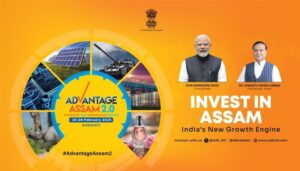
Introduction
The 51st G7 Summit, held from June 15 to 17, 2025, in Kananaskis, Alberta, marked a defining moment not only for global diplomacy but also for Canada’s renewed role on the world stage. For the first time, the summit was hosted under the leadership of Prime Minister Mark Carney, a former Bank of Canada and Bank of England governor whose entry into politics earlier that year signaled a shift toward technocratic competence and global engagement. His appointment came at a time when international cooperation was being tested by geopolitical rivalries, economic fragmentation, and the destabilizing forces of climate change and technological disruption.
Against this unstable global backdrop, the summit brought together leaders from the world’s largest industrialized democracies—Canada, France, Germany, Italy, Japan, the United Kingdom, the United States, and the European Union—to discuss a range of critical global concerns. The conflict in Ukraine continued to demand collective action, the Middle East experienced increased instability, and AI-powered technologies advanced faster than the legislative structures created to govern them. In this setting, Carney’s leadership, based on his extensive knowledge of global finance, sustainability, and institutional reform, provided the summit with gravitas and strategic clarity.
Canada’s G7 presidency focused on three key themes: creating resilient economies through trustworthy supply chains, improving global climate security, and managing important technologies like AI and quantum computing. Carney’s vision also envisioned increased engagement with the Global South to keep the G7 relevant in an increasingly multipolar world. His efforts were rewarded with extended conversations with African and Indo-Pacific countries, as well as increasing support for international development funds and food security measures.
Participants and Guests at 51st G7 Summit
G7 Core Member Nations
| Country | Leader | Title |
| Canada | Mark Carney | Prime Minister |
| France | Emmanuel Macron | President |
| Germany | Friedrich Merz | Chancellor |
| Italy | Giorgia Meloni | Prime Minister |
| Japan | Shigeru Ishiba | Prime Minister |
| United Kingdom | Keir Starmer | Prime Minister |
| United States | Donald Trump | President |
| European Union | Ursula von der Leyen (Commission President) António Costa (Council President) | EU Head of States Roles |
Special Invitees and Outreach Partners
Canada, as host, extended invitations to key non-G7 leaders under the Outreach Program, with a focus on Global South engagement, economic resilience, and technology cooperation. Attendees included:
| Country | Leader | Title |
| India | Narendra Modi | Prime Minister |
| South Korea | Lee Jae-myung | President |
| Australia | Anthony Albanese | Prime Minister |
| Brazil | Luiz Inácio Lula da Silva | President |
| South Africa | Cyril Ramaphosa | President |
| Mexico | Claudia Sheinbaum | President |
| United Arab Emirates | Mohamed bin Zayed Al Nahyan | President |
| Ukraine | Volodymyr Zelenskyy | President |
Institutional Representatives and Observers
Several international organizations were also represented to facilitate discussions on global governance, development finance, and digital regulation:
- United Nations – António Guterres (Secretary-General)
- World Bank – Ajay Banga (President)
- International Monetary Fund (IMF) – Kristalina Georgieva (Managing Director)
- OECD – Mathias Cormann (Secretary-General)
- World Health Organization (WHO) – Tedros Adhanom Ghebreyesus (Director-General)
- African Union, ASEAN, and CARICOM also sent rotating representatives as observers of the Global South development agenda.
Resolutions and Declarations
Following the conclusion of the 51st G7 Summit, a comprehensive Leaders’ Communiqué and a number of thematic joint statements were released, reflecting the bloc’s unity and changing objectives. The summit, which was chaired by Canada, resulted in a number of decisions intended to address current international issues and establish the framework for future multilateral collaboration. The most important resolutions and statements made during the summit are listed below:
Security Commitments to Ukraine
The G7 unanimously endorsed a multi-year defense and reconstruction compact for Ukraine, pledging continued military, intelligence, and financial support.
- A $65 billion collective commitment to Ukraine’s defense, energy infrastructure, and reconstruction efforts
- Bilateral security pacts between Ukraine and several G7 members
- A task force on tracking and repurposing frozen Russian sovereign assets for Ukrainian rebuilding
G7 Framework on Artificial Intelligence and Emerging Technologies
A landmark G7 AI Safety and Governance Declaration was issued, establishing common principles for:
- Risk-based regulation of advanced AI systems
- Mandatory transparency and explainability in AI models used for public services.
- Ban on autonomous AI weapons without human oversight
- A G7-supported AI Observatory for global coordination and misuse tracking
The summit also produced a draft framework for quantum governance, inviting input from academia, industry, and civil society by 2026.
Climate Security and Carbon Transition Plan
The G7 adopted a strong Climate Security Declaration, linking environmental degradation to geopolitical risk. Key commitments included:
- Accelerating phaseout of unabated fossil fuels by 2035
- Scaling up climate finance to $150 billion annually for the Global South
- Supporting early warning systems and resilience-building in vulnerable regions
- Finalizing a roadmap for global carbon pricing by 2027
- Canada and the EU jointly proposed an Arctic Conservation Partnership, aimed at preserving biodiversity and indigenous stewardship across the circumpolar north.
Economic Resilience and Supply Chain Compact
In response to growing geoeconomic fragmentation, G7 leaders launched the Trusted Supply Chain Initiative (TSCI) with a focus on:
- Collective diversification in critical mineral sourcing
- Coordinated investment in semiconductor manufacturing capacity
- Creation of a secure global inventory registry for essential goods
- A rapid-response mechanism for future supply chain disruptions
A separate G7-Business Dialogue was institutionalized to facilitate public-private coordination on economic resilience and technological innovation.
Global South Partnership Roadmap
Acknowledging the need to build trust with emerging economies, the G7 unveiled a new Global South Partnership Roadmap, which included:
- A $40 billion package for food security, digital infrastructure, and green energy in Africa and South Asia
- Expansion of concessional lending through MDBs (multilateral development banks)
- Reforms to voting shares and decision-making in the World Bank and IMF to reflect global economic realities
- Establishment of a Permanent G7-Global South Dialogue Forum, to convene annually
Digital Democracy and Information Integrity Charter
In light of growing threats to democratic systems from misinformation and digital authoritarianism, the G7 launched the Information Integrity Charter, pledging:
- Cooperation on election interference countermeasures
- A shared code of conduct for platforms operating across G7 jurisdictions
- Joint capacity building for developing nations to fight disinformation campaigns
This was supplemented by a Digital Civic Space Protection Fund, aimed at supporting independent media, civil society, and digital literacy initiatives globally.
Commitment to Multilateralism and Reform
In a reaffirmation of shared values, the G7 endorsed a resolution in support of:
- Strengthening the rules-based international order
- Reforming the World Trade Organization (WTO) to address trade distortions and digital trade
- Coordinated leadership on pandemic preparedness, including the creation of a G7 Global Health Preparedness Framework under WHO guidance
PM Modi’s Bilateral Meetings at 51st G7 Summit
PM Modi’s flank diplomacy at the G7 was a masterclass in balancing bilateral resets, multilateral vision, and Global South leadership. It reinforced India’s evolving role as a tech-industrial partner and diplomatic bridge, while highlighting unresolved tensions that remain in the background.
Resetting India-Canada Relations
- In his invitation to PM Narendra Modi, Canadian Prime Minister Mark Carney, who assumed office in March 2025, cited India’s position as the world’s fifth-largest economy and its crucial role in global supply chains for important minerals, energy, and digital infrastructure.
- This outreach was strongly supported by the other six G7 members, reinforcing the multilateral consensus on India’s essential participation.
- The summit served as a turning point in bilateral ties, which had cooled sharply following the 2023 diplomatic crisis over the Nijjar assassination.
- Modi and Carney met on June 17 and decided to re-appoint high commissioners and restore visa services, calling their meeting a “productive” bilateral dialogue.
- Both leaders reaffirmed a commitment to democracy, the rule of law, and respect for sovereignty.
India South-Korea Strategic Deepening
- In a pull-aside, Prime Minister Modi and South Korean President Lee Jae-myung reaffirmed their commitment to a more robust Special Strategic Partnership.
- Focus areas include trade, shipbuilding, green hydrogen, emerging technologies (such as AI and quantum), cultural and interpersonal cooperation, and regional and global challenges.
India-Mexico Meeting
PM Modi congratulated President Claudia Sheinbaum on her election victory during the first high-level meeting. Trade, pharmaceuticals, research and technology, digital innovation, vital minerals, agriculture, and food security were among the topics discussed. Modi commended Mexico’s counterterrorism assistance and extended an invitation for her to visit India.
India-Germany Bilateral Meeting
- Modi met Chancellor Friedrich Merz, his first one-to-one meeting since Merz’s tenure began.
- They discussed defence, security, counter-terrorism, green energy, climate technology, trade, and investment. Modi thanked Germany for its solidarity on terrorism
PM Modi’s Global South Outreach
- Met African and Latin American leaders. Ramaphosa (South Africa) & Lula (Brazil): Reinforced Global South priorities
- Engaged with EU leaders, Ursula von der Leyen and António Costa on trade, digital governance, and democracy.
PM Modi’s G7 Outreach Session
- A call against terror double standards, stating: “Countries that openly support terrorism are rewarded.
- He emphasized a unified global stand against terrorism, underscoring that those who harbour terror groups must be held accountable.
- Linked renewables with AI’s energy need, advocating for watermarking and ethical tech frameworks .
- Modi underscored India’s initiatives—ISA, CDRI, and Global Biofuels Alliance—as effective models for inclusive development
India–Australia Multidimensional Dialogue
- Modi met Prime Minister Anthony Albanese in a warm and friendly exchange.
- The focus was on regional and international collaboration, supporting counterterrorism initiatives and Indo-Pacific stability.
Conclusion
The 51st G7 Summit in Kananaskis, Canada, unfolded as a complex interplay of diplomacy, disruption, and global repositioning. Marked by the return of Donald Trump to the global stage, the debut of new leaders like Mark Carney, Keir Starmer, and Claudia Sheinbaum, and the assertive presence of Global South voices, the summit reflected a world navigating the crosscurrents of multipolarity, technology governance, and renewed geopolitical fault lines.
India, under Prime Minister Narendra Modi, emerged as a prominent actor, balancing strategic outreach, bilateral resets, and principled interventions on terrorism and digital ethics. His high-stakes meeting with Canadian PM Mark Carney helped reboot strained ties, while his forceful messaging at the outreach session underscored India’s aspiration to lead the Global South’s voice on multilateral platforms.
Yet, the summit also revealed the persistent tensions that shadow diplomacy: protests from Sikh communities, human rights accusations from Canadian intelligence, and the absence of some key invitees like Indonesia and Saudi Arabia. These developments hint at the limits of summit diplomacy in resolving deep-rooted political rifts.
Ultimately, the 2025 G7 Summit was less about unified declarations and more about realignments of partnerships, priorities, and perceptions. For India and the world, it offered both an opportunity and a mirror: to engage constructively in shaping the post-pandemic, AI-driven, and climate-conscious global order, while acknowledging that trust, justice, and accountability remain unfinished business.






